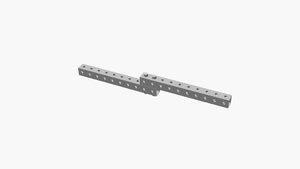Splicing frames: Difference between revisions
From
No edit summary |
No edit summary |
||
| Line 17: | Line 17: | ||
=Introduction= | =Introduction= | ||
A splice joint is a method of joining two members end to end. The splice joint is most often used when structural [[frames]] are required in longer lengths than available. It is an alternative to other joints such as the butt joint and the scarf joint. Splice joints are stronger than unenforced butt joints. | |||
=Challenges= | =Challenges= | ||
| Line 27: | Line 27: | ||
=References= | =References= | ||
* [https://en.wikipedia.org/wiki/Splice_joint Wikipedia: Splice joint] | |||
Revision as of 08:26, 14 June 2021
Introduction
A splice joint is a method of joining two members end to end. The splice joint is most often used when structural frames are required in longer lengths than available. It is an alternative to other joints such as the butt joint and the scarf joint. Splice joints are stronger than unenforced butt joints.
Challenges
- Potential for bolt shear in load bearing applications.
Approaches
- 2 bolts - non-load bearing
- 3 bolts - load bearing
